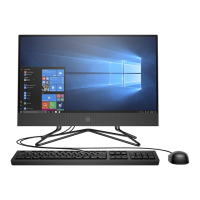5Ć20 Functional Overview
C3187Ć90000
The vectorĆtoĆraster converter (VRC) or rasterĆtoĆraster converter (RRC), depending on the
data format sent, rasterizes the data from the display list, swath by swath, and sends the
swaths to a swath holding area.
The swath holding area is part of the DRAM that is specially allocated for this purpose. The
swath holding area is large enough to hold up to three swaths at a time.
The swath manager firmware algorithm removes data from the swath holding area and
reorganizes the data for more efficient plotting. This enables the plotter to sweep the
carriage to areas that require ink and to conserve motion by not sweeping blank areas of the
media. Variables are calculated and stored during this optimization.
The swath manager then replaces the data into the swath holding area.
The printĆengine controller removes the organized data from the swath holding area and
copies it to the physical swath RAM area. The plotter's microprocessor has a feature called
burst mode," enabling data to be copied from one area of memory to another very quickly.
The printĆengine controller uses the variables calculated by the swath manager to determine
the stop and start positions of the swath and thus control the carriage movement.
The swath RAM is dedicated RAM memory and not part of the DRAM.
The cartridgeĆinterface ASIC (ApplicationĆSpecific Integrated Circuit) controls the shuffling
of pure swath data to the actual firing order of the cartridge nozzles. It fetches pixels from
the physical swath RAM and sends it serially through the trailing cable to the carriage ASIC.
This sending of pixel data is initiated by means of a signal sent to the cartridgeĆinterface
ASIC by the processorĆsupport ASIC, so as to synchronize the motion of the media motor and
carriage motor with the firing of the printĆhead drivers.
The carriage ASIC generates the select and enable signals to drive the cartridgeĆdriver
integrated circuits.
The cartridge drivers provide the firing pulses for the printĆhead nozzles.
